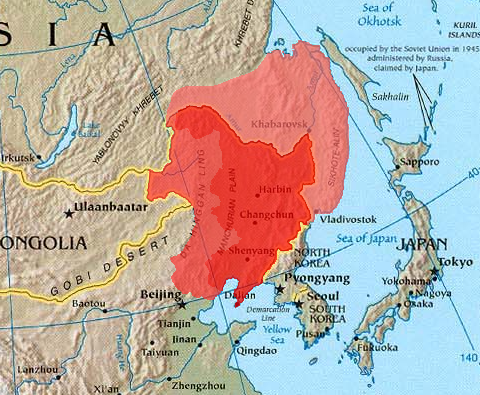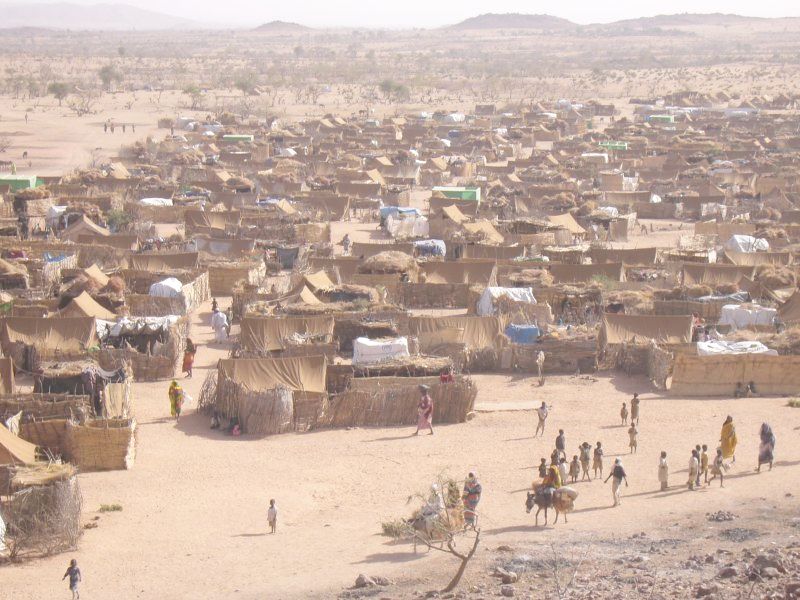|
Julius Dorpmüller
Julius Heinrich Dorpmueller (24 July 1869 – 5 July 1945) was general manager of Deutsche Reichsbahn-Gesellschaft from 1926 to 1945, a Nazi politician and the Reich Minister for Transport from 1937 to 1945. Life Dorpmueller was the son of a railway engineer, and studied railway and road construction from 1889 to 1893. After graduating in 1898, Dorpmueller was active in the Prussian state railway administration. In 1907, he stepped down as an executive of the technical office and went into the service of the Schantung railway in Tsingtao. In 1908, he was appointed chief engineer for the German section of the new Chinese Imperial state Tianjin-Pukou railway. Due to the declaration of war by China against the German Reich, he returned as a refugee in 1918, passing through Manchuria, Siberia and Russia to Germany. In the light railway service, he was active in the management of the Transcaucasian SFSR railways. In 1919, he became departmental head with German Reich Railways ('' ... [...More Info...] [...Related Items...] OR: [Wikipedia] [Google] [Baidu] |
Reich Ministry Of Transport
The Reich Ministry of Transport (german: Reichsverkehrsministerium or ''RVM'') was a cabinet-level agency of the German government from 1919 until 1945, operating during the Weimar Republic and Nazi Germany. Formed from the Prussian Ministry of Public Works after the end of World War I, the ''RVM'' was in charge of regulating German railways, roadways, waterways, and the construction industry - a kind of infrastructure agency in today's understanding. In the 1920s, the Ministry's involvement in the rail sector was limited to administrative and technical supervisory functions. The National Railway ('' Deutsche Reichsbahn'') was initially organized as an independent state-owned company to guarantee that Germany paid war reparations according to the provisions of the 1924 Dawes Plan. Under Nazi control, the Transport Ministry expanded exponentially. The ''Reichsbahn'', which had become Germany's largest public asset and also the largest such enterprise in the capitalist world a ... [...More Info...] [...Related Items...] OR: [Wikipedia] [Google] [Baidu] |
Deutsche Reichsbahn-Gesellschaft
The ''Deutsche Reichsbahn'', also known as the German National Railway, the German State Railway, German Reich Railway, and the German Imperial Railway, was the German national railway system created after the end of World War I from the regional railways of the individual states of the German Empire. The ''Deutsche Reichsbahn'' has been described as "the largest enterprise in the capitalist world in the years between 1920 and 1932"; nevertheless its importance "arises primarily from the fact that the Reichsbahn was at the center of events in a period of great turmoil in German history". Overview The company was founded on 1 April 1920 as the ("German Imperial Railways") when the Weimar Republic, which still used the nation-state term of the previous monarchy, (German Reich, hence the usage of the in the name of the railway; the monarchical term was ), took national control of the German railways, which had previously been run by the German states. In 1924 it was reorganise ... [...More Info...] [...Related Items...] OR: [Wikipedia] [Google] [Baidu] |
Transcaucasian SFSR
, conventional_long_name = Transcaucasian Socialist Federative Soviet Republic , common_name = Transcaucasian SFSR , p1 = Armenian Soviet Socialist RepublicArmenian SSR , flag_p1 = Flag of SSRA.svg , p2 = Azerbaijan Soviet Socialist RepublicAzerbaijan SSR , flag_p2 = Flag of Azerbaijan SSR (1921-1922).svg , p3 = Georgian Soviet Socialist RepublicGeorgian SSR , flag_p3 = Flag of Georgian SSR (1921-1922).svg , s1 = Armenian Soviet Socialist RepublicArmenian SSR , flag_s1 = Flag of Armenian SSR (1937-1940).svg , s2 = Azerbaijan Soviet Socialist RepublicAzerbaijan SSR , flag_s2 = Flag_of_Azerbaijan_SSR_(1937-1940).svg , s3 = Georgian Soviet Socialist RepublicGeorgian SSR , flag_s3 = Flag of the Georgian Soviet Socialist Republi ... [...More Info...] [...Related Items...] OR: [Wikipedia] [Google] [Baidu] |
Light Railway
A light railway is a railway built at lower costs and to lower standards than typical "heavy rail": it uses lighter-weight track, and may have more steep gradients and tight curves to reduce civil engineering costs. These lighter standards allow lower costs of operation, at the price of lower vehicle capacity. Narrow gauge thumb , right , 250px , Restored Kühlungsborn.html" ;"title="Molli railway at Kühlungsborn">Molli railway at Kühlungsborn, Mecklenburg, Germany () In countries where a single standard gauge is dominant, the term light railway does not imply a narrow gauge railway. Most narrow gauge railways operate as light railways, but not all light railways need be narrow gauge. After Spooner's development of steam haulage for narrow gauge railways, the prevailing view was that the gauge should be tailored according to the traffic: "''The nearer the machine is apportioned to the work it has to do the cheaper will that work be done.''" From the 1890s, it was re ... [...More Info...] [...Related Items...] OR: [Wikipedia] [Google] [Baidu] |
Russia
Russia (, , ), or the Russian Federation, is a transcontinental country spanning Eastern Europe and Northern Asia. It is the largest country in the world, with its internationally recognised territory covering , and encompassing one-eighth of Earth's inhabitable landmass. Russia extends across eleven time zones and shares land boundaries with fourteen countries, more than any other country but China. It is the world's ninth-most populous country and Europe's most populous country, with a population of 146 million people. The country's capital and largest city is Moscow, the largest city entirely within Europe. Saint Petersburg is Russia's cultural centre and second-largest city. Other major urban areas include Novosibirsk, Yekaterinburg, Nizhny Novgorod, and Kazan. The East Slavs emerged as a recognisable group in Europe between the 3rd and 8th centuries CE. Kievan Rus' arose as a state in the 9th century, and in 988, it adopted Orthodox Christianity from the ... [...More Info...] [...Related Items...] OR: [Wikipedia] [Google] [Baidu] |
Siberia
Siberia ( ; rus, Сибирь, r=Sibir', p=sʲɪˈbʲirʲ, a=Ru-Сибирь.ogg) is an extensive geographical region, constituting all of North Asia, from the Ural Mountains in the west to the Pacific Ocean in the east. It has been a part of Russia since the latter half of the 16th century, after the Russians conquered lands east of the Ural Mountains. Siberia is vast and sparsely populated, covering an area of over , but home to merely one-fifth of Russia's population. Novosibirsk, Krasnoyarsk and Omsk are the largest cities in the region. Because Siberia is a geographic and historic region and not a political entity, there is no single precise definition of its territorial borders. Traditionally, Siberia extends eastwards from the Ural Mountains to the Pacific Ocean, and includes most of the drainage basin of the Arctic Ocean. The river Yenisey divides Siberia into two parts, Western and Eastern. Siberia stretches southwards from the Arctic Ocean to the hills of nort ... [...More Info...] [...Related Items...] OR: [Wikipedia] [Google] [Baidu] |
Manchuria
Manchuria is an exonym (derived from the endo demonym "Manchu") for a historical and geographic region in Northeast Asia encompassing the entirety of present-day Northeast China (Inner Manchuria) and parts of the Russian Far East ( Outer Manchuria). Its meaning may vary depending on the context: * Historical polities and geographical regions usually referred to as Manchuria: ** The Later Jin (1616–1636), the Manchu-led dynasty which renamed itself from "Jin" to "Qing", and the ethnicity from "Jurchen" to "Manchu" in 1636 ** the subsequent duration of the Qing dynasty prior to its conquest of China proper (1644) ** the northeastern region of Qing dynasty China, the homeland of Manchus, known as "Guandong" or "Guanwai" during the Qing dynasty ** The region of Northeast Asia that served as the historical homeland of the Jurchens and later their descendants Manchus ***Qing control of Dauria (the region north of the Amur River, but in its watershed) was contested in 1643 ... [...More Info...] [...Related Items...] OR: [Wikipedia] [Google] [Baidu] |
Refugee
A refugee, conventionally speaking, is a displaced person who has crossed national borders and who cannot or is unwilling to return home due to well-founded fear of persecution.FAQ: Who is a refugee? ''www.unhcr.org'', accessed 22 June 2021 Such a person may be called an asylum seeker until granted refugee status by the contracting state or the United Nations High Commissioner for Refugees (UNH ... [...More Info...] [...Related Items...] OR: [Wikipedia] [Google] [Baidu] |
German Reich
German ''Reich'' (lit. German Realm, German Empire, from german: Deutsches Reich, ) was the constitutional name for the German nation state that existed from 1871 to 1945. The ''Reich'' became understood as deriving its authority and sovereignty entirely from a continuing unitary German Volk ("national people"), with that authority and sovereignty being exercised at any one time over a unitary German "state territory" with variable boundaries and extent. Although commonly translated as "German Empire", the word ''Reich'' here better translates as "realm" or territorial "reach", in that the term does not in itself have monarchical connotations. The Federal Republic of Germany asserted, following its establishment in 1949, that within its boundaries it was the sole legal continuation of the German Reich, and consequently ''not'' a successor state. Nevertheless, the Federal Republic did not maintain the specific title ''German Reich'', and so consistently replaced the prefix ''Re ... [...More Info...] [...Related Items...] OR: [Wikipedia] [Google] [Baidu] |
Tsingtao
Qingdao (, also spelled Tsingtao; , Mandarin: ) is a major city in eastern Shandong Province. The city's name in Chinese characters literally means "azure island". Located on China's Yellow Sea coast, it is a major nodal city of the One Belt, One Road (OBOR) Initiative that connects Asia with Europe. It has the highest GDP of any city in the province. Administered at the sub-provincial level, Qingdao has jurisdiction over seven districts and three county-level cities (Jiaozhou, Pingdu, Laixi). As of the 2020 census, Qingdao built-up (or metro) area made of the 7 urban Districts (Shinan, Shibei, Huangdao, Laoshan, Licang, Chengyang and Jimo) was home to 7,172,451 inhabitants. Lying across the Shandong Peninsula and looking out to the Yellow Sea, it borders the prefecture-level cities of Yantai to the northeast, Weifang to the west and Rizhao to the southwest. Qingdao is a major seaport and naval base, as well as a commercial and financial center. It is home to electronics ... [...More Info...] [...Related Items...] OR: [Wikipedia] [Google] [Baidu] |






